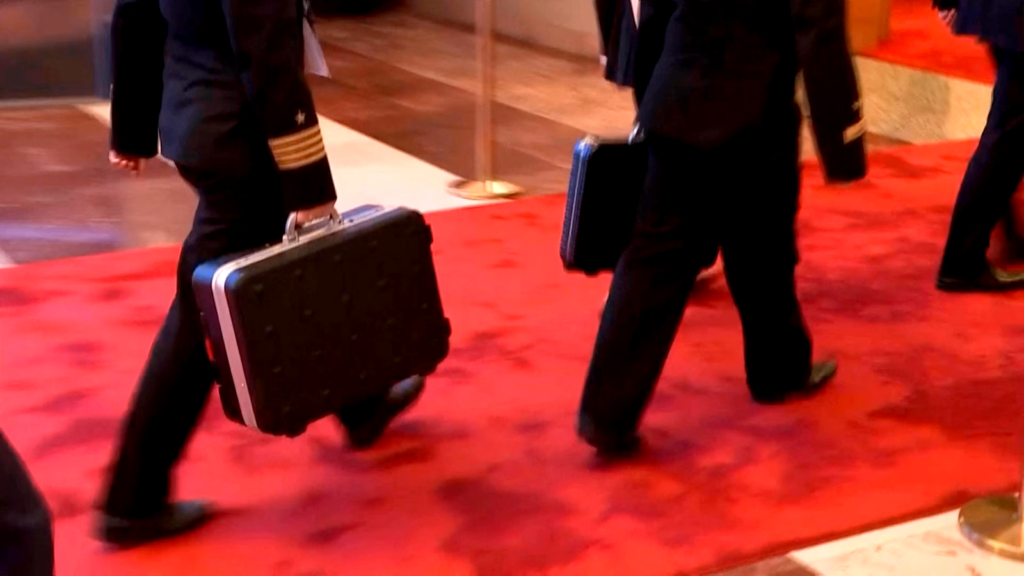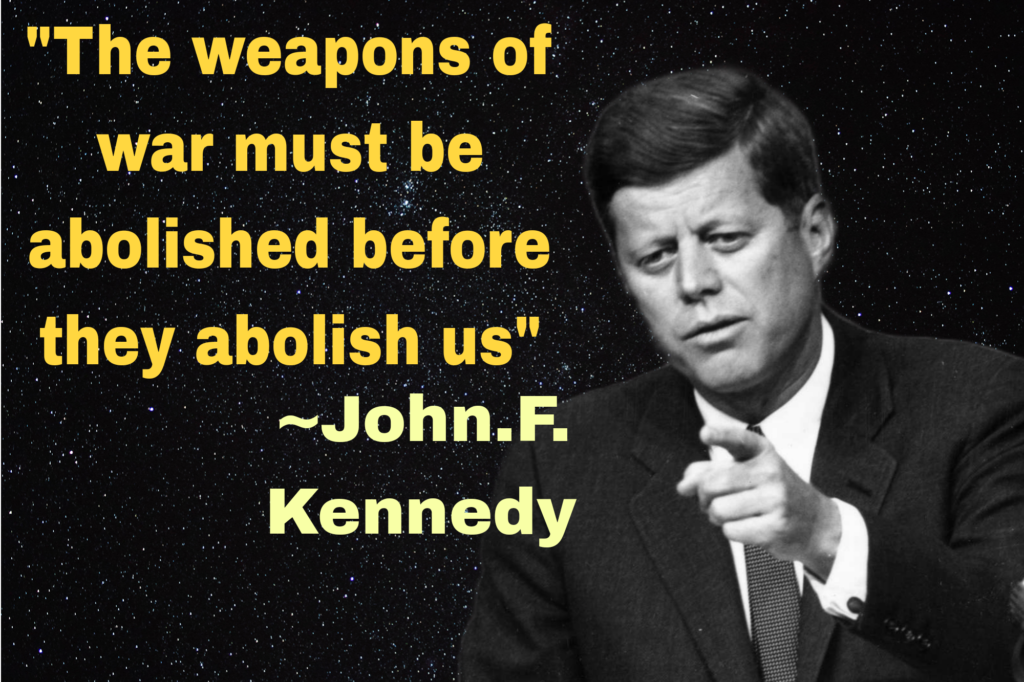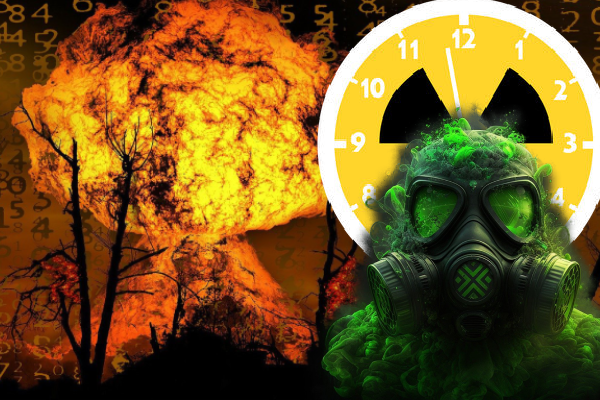“Nuclear countdown begins” Well this title of a blog is scary but this title justifies the content of the blog and I have many examples to support it.
Nuclear countries are increasing their nuclear stockpiles, Russian Parliament has backed the decision of the Kremlin to withdraw the ratification of the Comprehensive Nuclear Test Ban Treaty (CBTB). In response to Russia’s decision, the USA conducted a nuclear test. During the Ukraine war, Russia shifted Tactical nuclear weapons to Belarus.
Iran has removed the surveillance cameras of IAEA from their nuclear sites and the USA already warned in the report that Iran has the capacity to test the nuclear bomb in two weeks.
Last year North Korea passed a law that allows the pre-emptive use of nuclear weapons against South Korea and the USA.
Even after reading the above examples, it would be foolish to ignore the fact that the threat of nuclear escalation is a reality. I am not saying that the world would witness a full-fledged nuclear war but passing nuclear-related laws, and conducting nuclear tests to show off strength is a never-ending cycle that increases the security dilemma of other countries.
Table of Contents
Nuclear Doctrine
The nuclear doctrine of a country is a nuclear weapons-related policy of a country as to when and in what circumstances it would use nuclear weapons. Nuclear doctrines are the best guide for geopolitical analysts across the globe to contemplate the nuclear strike. Let us know about the nuclear doctrines of some countries which have the potential to start a nuclear war.
USA
The USA does not follow the policy of No First Use. USA nuclear doctrine calls for high alertness of nuclear weapons to strike adversaries which means the USA can conduct pre-emptive strikes.
Russia
According to Russia’s nuclear doctrine, Russia could use nuclear weapons in case of existential threat, but it had not defined what threats are existential.
North Korea
North Korea passed a law in September 2022 that allows pre-emptive use of nuclear weapons to deter any possible attack. The law as all other dictators would love gave sole authority over the use of nuclear weapons to Kim.
Pakistan
Pakistan’s nuclear doctrine allows it to use nuclear weapons against conventional as well as nuclear attacks, which means Pakistan does not follow no first-use policy.
Israel
Israel follows ‘Samson Option’ a name given to Israel’s deterrence strategy by military analysts which states that Israel would use nukes as a last resort against a country whose military destroyed much of Israel.
why nuclear treaties failed?
‘Trust Deficit’ is a major reason for the failure of nuclear treaties, in this section, we will discuss two treaties that were in the news recently.
New START Treaty
The new START treaty is a nuclear arms reduction treaty between the USA and Russia signed in 2010. Russia on 23rd February 2023 withdrew from the last remaining nuclear arms treaty between the two countries stating that the West wants to destroy Russia.
Comprehensive Nuclear Test Ban Treaty(CTBT)
Russian Parliament backed the decision of the Kremlin to withdraw the ratification of CTBT as the USA never ratified the CTBT. CTBT is a multilateral treaty that bans nuclear weapons tests in any environment
Nuclear Briefcase
The Russian President and the US President carry a nuclear briefcase with them wherever they go. The nuclear briefcase is part of the secured communication setup meant to authorize nuclear strikes. Even if the President is in an airplane he can direct the nuclear command chain to act accordingly.
Recently when Vladimir Putin was in China he was seen with two naval officers carrying nuclear briefcases. It is not the first time Putin carried the nuke briefcase but was the rare occasion when the briefcase was seen held so close to him. This might be Putin’s way of conveying the message to the West that when it comes to nuclear he means business.
A nuclear Briefcase is a good example of how easily nuclear strikes can be conducted at any time from anywhere.

Is Nuclear war possible?
The possibility of a full-fledged nuclear war is minimal as it brings with it mutually assured destruction. Nuclear weapons are accompanied by the concept of Nuclear Deterrence which means it discourages or restrains another country from attacking a nuclear-armed country as it would ensure the complete destruction of the former.
Even during the most dangerous incident of the Cold War period that is Cuban Missile Crisis nuclear weapons were not used though nuclear weapons were put on high alert mode.
Though there is less possibility of using high-yield nuclear bombs the possibility of using the tactical nuclear bomb is always high when a nuclear-armed country is at war especially if the country is run by an authoritarian leader.
Russia has several times threatened to use tactical nuclear weapons against Ukraine. Many nuclear weapon states that lag at the conventional level resort to nukes to avoid an embarrassing defeat.
Survival of the regime is one more reason why dictators like Kim Jong Un and Russian President Putin rely heavily on nuclear weapons. Joe Biden’s statement that Putin cannot remain in power bolsters this reason. Saddam Hussein in Iraq and Gaddafi in Libya are good examples of how Western countries can overturn a regime in a country.
Therefore, the US military must devise a strategy for conventional war in a manner that avert major escalation. The US must not threaten the survival of any regime especially if it is a nuclear state because a desperate leader would use nukes to save his regime.
Cuban Missile Crisis: A Great Lesson
The Cuban Missile Crisis started on 16 October 1962 when the USA came to know about the deployment of Soviet nuclear missiles in Cuba. USSR wanted to give the USA a taste of its own medicine as the USA stationed its Jupiter Nuclear missiles in Turkey close to the Soviet border. Washington D.C. was in 5 minutes range and therefore USA could not afford to have Soviet nukes in its backyard.
October 27 1962 is known as Black Saturday in Washington, a day when the world was on the brink of nuclear apocalypse. NATO led by the USA and USSR was in an eyeball-to-eyeball moment and a slight misunderstanding could start a nuclear war.
Then US President John Kennedy and his brother Robert Kennedy conveyed a secret offer to Soviet leader Khrushchev that the USA would remove its missiles from Turkey in exchange for the USSR removing its missiles from Cuba.
On 28th October 1962 Moscow radio read a direct message to John Kennedy from Khrushchev,
“The Soviet government, in addition to earlier instructions on discontinuation of further work on weapons construction sites, has given a new order to dismantle the weapons you described as offensive, and to crate and return them to the Soviet Union.”
A major nuclear war was averted millions of lives were saved. Today nuclear-armed countries are in a race to increase their nuclear stockpile, threatening adversaries with nuclear bombs need to fetch some lessons from John Kennedy and Khrushchev. They both knew the catastrophic disaster nuclear weapons could bring to the world. In the interests of humanity, they took one step back each, put their egos aside, and showed what leaders ought to be like. Manliness is not in giving nuclear threat but in showing a sense of maturity for the care of humanity.

